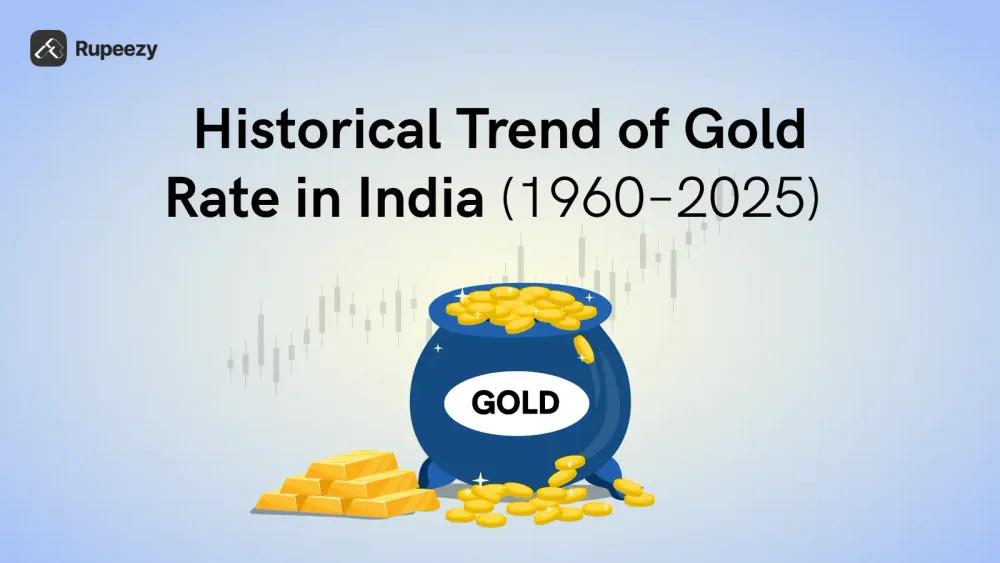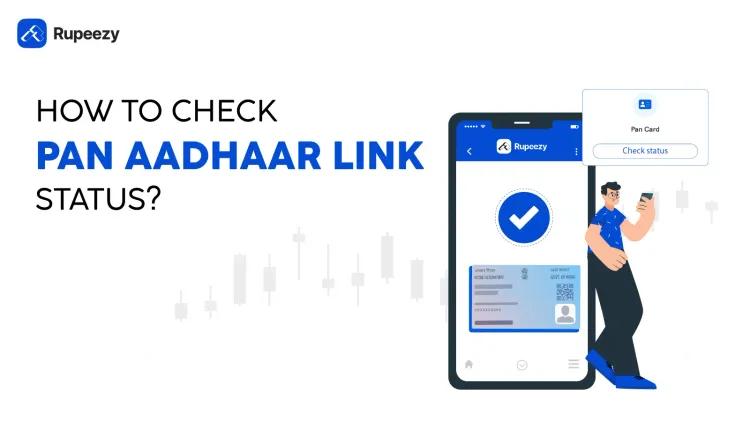Historical Trend of Gold Rate - Gold Price History in India


00:00 / 00:00
Gold has been a cornerstone of wealth and security in India for centuries, admired for both its cultural significance and its role as a valuable investment. Gold price history in India reflects fluctuations influenced by economic events, geopolitical tensions, and market dynamics. The rise in gold prices over time has made it one of the most reliable assets for Indians, whether for investment purposes, wealth preservation, or as part of traditional rituals. In this article, we examine the gold rate history in India, focusing on year-wise trends and the factors that have driven these fluctuations.
Gold Price History in India: Year-Wise Trends
Here is the gold price history in India, showing the 22K gold rate per gram and per pavan (8 grams) over the years. This gold price year-wise trend highlights the fluctuations due to various economic factors.
List of gold price trends | ||
|---|---|---|
Year | 22K Gold Rate (per gram) | 22K Gold Rate (per gram) |
1960 | Rs 50 | Rs 400 |
1970 | Rs 65 | Rs 520 |
1980 | Rs 250 | Rs 2,000 |
1990 | Rs 500 | Rs 4,000 |
2000 | Rs 600 | Rs 4,800 |
2005 | Rs 1,000 | Rs 8,000 |
2010 | Rs 1,400 | Rs 11,200 |
2011 | Rs 2,100 | Rs 16,800 |
2012 | Rs 2,600 | Rs 20,800 |
2013 | Rs 3,000 | Rs 24,000 |
2014 | Rs 2,800 | Rs 22,400 |
2015 | Rs 2,500 | Rs 20,000 |
2016 | Rs 2,600 | Rs 20,800 |
2017 | Rs 2,900 | Rs 23,200 |
2018 | Rs 3,100 | Rs 24,800 |
2019 | Rs 3,500 | Rs 28,000 |
2020 | Rs 5,000 | Rs 40,000 |
2021 | Rs 4,700 | Rs 37,600 |
2022 | Rs 5,100 | Rs 40,800 |
2023 | Rs 5,600 | Rs 44,800 |
2024 | Rs 5,800 | Rs 46,400 |
2025 | Rs 9,210 | Rs 73,680 |
Note: Prices are approximate and can vary based on city and market conditions.
Why Gold Prices Are Increasing: Factors Behind the Surge
The gold price history in India has been significantly impacted by several key factors. Here's an overview of why the gold rate year-wise continues to rise over the years:
Global Economic Instability: Economic downturns, such as the 2008 financial crisis and the 2020 COVID-19 pandemic, increased demand for gold as a safe-haven asset. During such times, investors flock to gold, driving its prices up.
Currency Depreciation: The depreciation of the Indian Rupee against the US Dollar directly impacts gold prices in India, as it is internationally priced in USD. A weaker rupee makes gold more expensive in local currency terms.
Inflation: Gold is often used as a hedge against inflation. As the cost of living increases, people turn to gold to preserve the value of their wealth.
Geopolitical Tensions: Conflicts and instability, such as the Russia-Ukraine war, have historically driven up gold prices as investors seek stability in uncertain times.
Central Bank Policies: Global monetary policies, such as low-interest rates and quantitative easing, contribute to the rise in gold prices by increasing liquidity in the markets and boosting demand for precious metals.
Significant Events Leading to Gold Price Rises in India
Several major incidents have caused gold prices to rise sharply. Below are the events that led to notable increases in the gold rate year-wise:
The Collapse of the Bretton Woods System (1970s):
The end of the Bretton Woods system in 1971 led to a surge in gold prices globally, including in India. This event set the stage for the gold price history in India to enter a significant upward trajectory, with prices increasing from ?65 per gram in 1970 to ?250 per gram by 1980.
Global Financial Crisis (2008–2009):
The 2008 financial crisis led to a sharp rise in gold prices as the global economy faltered. Investors sought the security of gold as stock markets crashed and major financial institutions failed. The gold price chart in India for the last 10 years shows a rise from ?11,200 per gram in 2008 to ?16,800 per gram by 2011.
COVID-19 Pandemic (2020):
The onset of the COVID-19 pandemic and its subsequent global economic impact led to unprecedented demand for gold. Governments worldwide printed more money, leading to inflation concerns. Gold prices surged to ?5,000 per gram in 2020, as seen in the gold price last 5 years in India.
Geopolitical Tensions (2022–2023):
Tensions from the Russia-Ukraine war and global instability contributed to the price increase, pushing gold to ?5,600 per gram in 2023. This reflects the historical prices of gold in India during periods of geopolitical crises.
Inflation Surge (2025):
As inflationary pressures build globally, the gold price history in India saw a dramatic surge to ?9,210 per gram in 2025, driven by inflation fears and economic instability. This marks a new high for gold, making it a favorable investment amidst uncertain financial conditions.
Conclusion
The year-wise gold rate in India has consistently risen due to a combination of factors including global economic events, currency devaluation, inflation, and geopolitical uncertainty. As we can see from the gold historical prices in India, gold has not only been a store of value but also a safe-haven asset during times of crisis. The gold price chart in India for the last 10 years and the gold price last 5 years in India show that gold continues to be an important investment in India’s financial landscape. The gold rate history in India will likely continue to rise, with 2025 marking a new peak due to economic challenges and inflationary concerns.
As gold remains an integral part of the investment strategy for many Indians, the historical trends underscore its importance as a resilient asset that provides security during uncertain times.
The content on this blog is for educational purposes only and should not be considered investment advice. While we strive for accuracy, some information may contain errors or delays in updates.
Mentions of stocks or investment products are solely for informational purposes and do not constitute recommendations. Investors should conduct their own research before making any decisions.
Investing in financial markets are subject to market risks, and past performance does not guarantee future results. It is advisable to consult a qualified financial professional, review official documents, and verify information independently before making investment decisions.

All Category










